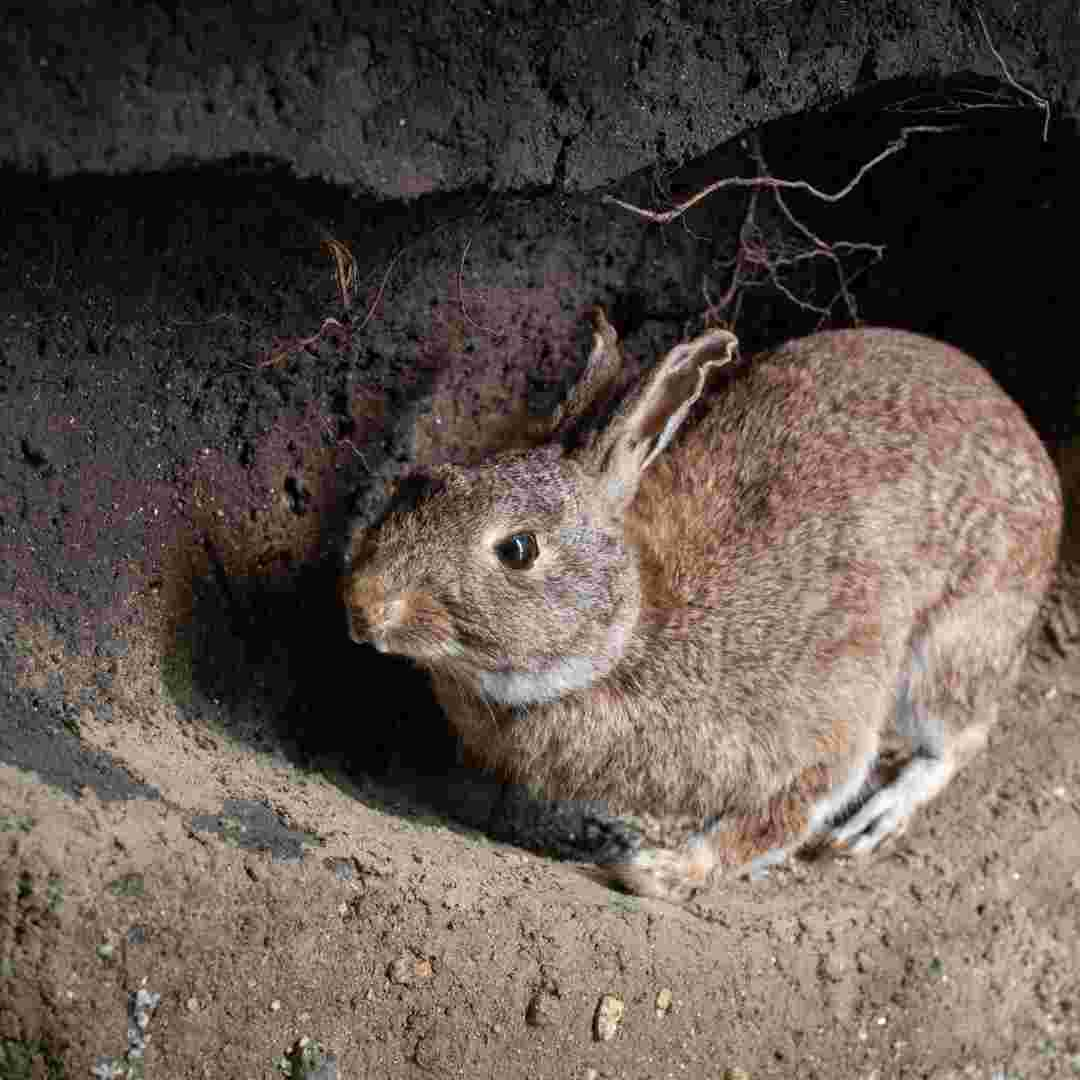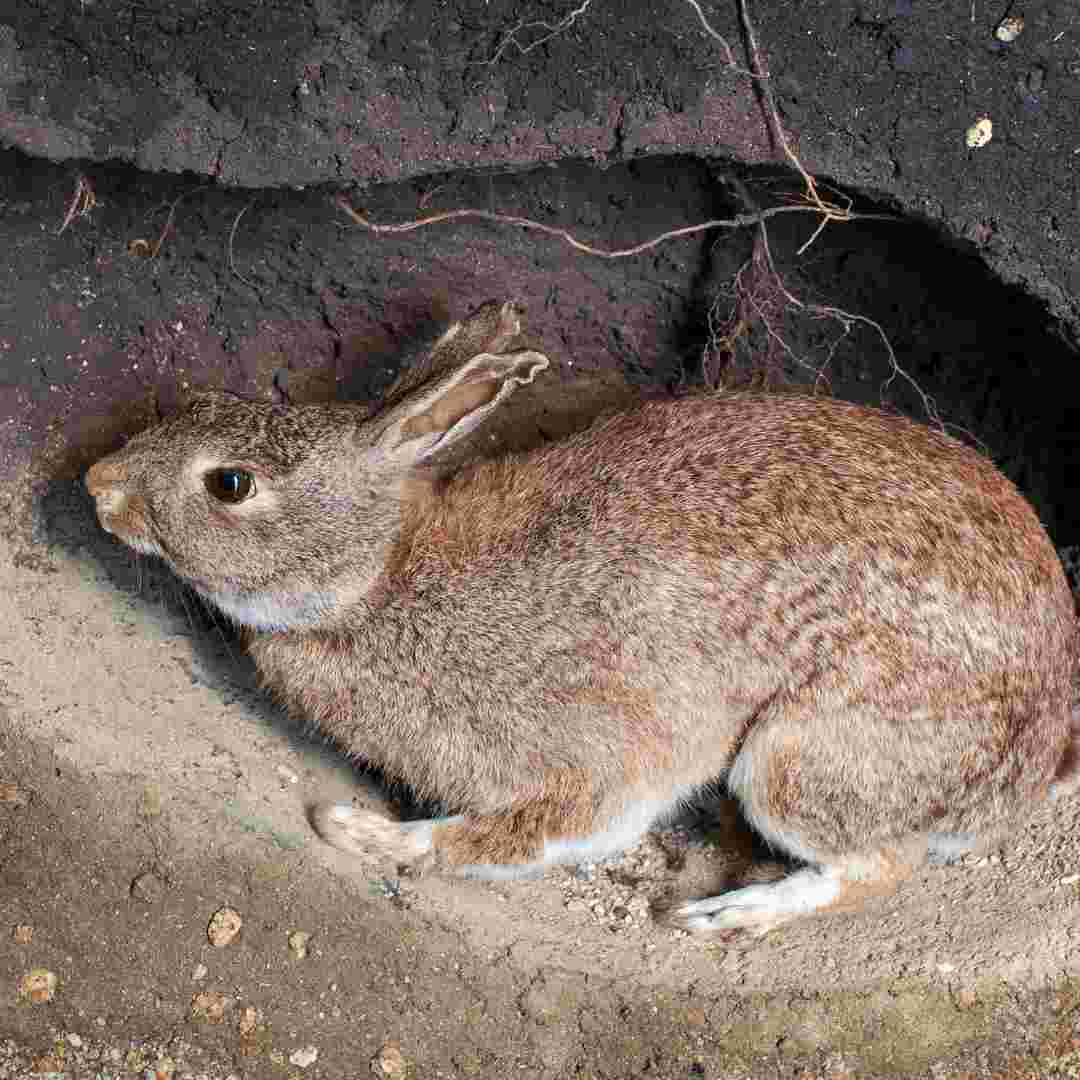Contents Table
Introduction
rabbit burrow anatomy: how rabbits dig and build homes
Why rabbits burrow and what they gain
Rabbit Burrow Types: How Rabbits Tailor Their Homes to Environment
How rabbit burrows affect the ecosystem
Rabbit burrows: how they've changed over time
Q&A
Conclusion
Introduction
Small creatures like rabbits dig burrows. Rabbits build burrows for shelter and protection against predators. Rabbits dig several-foot-deep burrows with their strong front legs and sharp claws. The burrows are lined with grass and other things for warmth. Rabbit burrows store food and hide from predators. Rabbit burrows give shelter and can nurture offspring.
rabbit burrow anatomy: how rabbits dig and build homes
Rabbits are notorious for digging and building elaborate underground habitats. Rabbits need these burrows for shelter and predator defence. We'll examine rabbit burrow anatomy and how rabbits build their homes in this post.
Fields, meadows, and gardens with loose soil are where rabbits burrow. The entrance and nest chamber are normally at opposite ends of the U-shaped burrow. The entrance is usually 4-6 inches wide and lined with fur and grass for rabbit comfort. To keep warm, the burrow's lowest nest chamber is lined with fur and grass.
Rabbits dig burrows with their muscular front legs and claws. After excavating a shallow trench, they deepen it to the appropriate depth. They push earth with their hind legs when digging. Burrows are 2-3 feet deep and up to 10 feet long.
After building the tunnel, the rabbit will fill the walls and floor with fur and grass for warmth. They may also add twigs and leaves to the nest chamber for insulation. They sleep, hide from predators, and rear their young in the burrow.
In conclusion, rabbits can build elaborate underground homes. Burrows are 2-3 feet deep and up to 10 feet long, dug by their muscular front legs and claws. After building the tunnel, the rabbit will fill the walls and floor with fur and grass for warmth. They sleep, hide from predators, and rear their young in the burrow.
Why rabbits burrow and what they gain
Digging is essential to rabbits' existence. Rabbits use burrows to hide from predators, rest, and raise their young. It helps them find food and maintain body temperature.
For safety, rabbits dig. Burrowing protects them from predators. Prey animals like rabbits must hide swiftly and effectively. They can rest and sleep safely in burrows.
Burrowing helps rabbits maintain body temperature. Rabbits are sensitive to high temperatures, so they require a cool area to relax on hot days and a warm place on cold days. Burrowing aids them.
Burrowing helps rabbits eat. Foragers like rabbits must obtain food quickly. Burrowing reveals roots and bulbs, food sources.
Finally, burrowing helps rabbits nurture babies. Rabbits are social and need a safe location to rear their young. They can do this safely by burrowing.
Burrowing is crucial for rabbits. They can relax, eat, and be protected there. It aids in body temperature regulation and child rearing.
Rabbit Burrow Types: How Rabbits Tailor Their Homes to Environment
Rabbits are noted for burrowing and adapting to varied settings. Rabbits dig different burrows to shelter and avoid predators depending on the surroundings. This article will discuss rabbit burrow types and their environmental adaptations.
The tunnel rabbit burrow is the most common. In open grasslands, this burrow has one tube dug into the ground. Usually two feet deep, the tunnel might be six feet long. A plant or debris-hidden entrance and fur and grass-lined tunnel provide insulation. This hole helps rabbits evade predators and stay warm in cold weather.
Rabbits build more complex burrows in dense vegetation. This burrow has interconnected tunnels. Tunnels can be two feet deep and ten feet long. Fur and grass inside the burrow insulate it, and foliage or debris hides the opening. This hole helps rabbits evade predators and stay warm in cold weather.
Rabbits dig shallow burrows in rocky locations. This form of burrow has interconnected shallow tunnels. Tunnels can be five feet long and one foot deep. Fur and grass inside the burrow insulate it, and foliage or debris hides the opening. This hole helps rabbits evade predators and stay warm in cold weather.
Finally, rabbits dig shallow burrows in sandy regions. This form of burrow has interconnected shallow tunnels. Tunnels can be five feet long and one foot deep. Fur and grass inside the burrow insulate it, and foliage or debris hides the opening. This hole helps rabbits evade predators and stay warm in cold weather.
Rabbit burrows were adapted to varied conditions to give refuge and protection from predators. Understanding rabbit burrow types helps us understand how rabbits adapt to their environment and thrive in the wild.
How rabbit burrows affect the ecosystem
Habitat and protection for rabbits and other animals are provided by rabbit burrows. Rabbits are keystone species, meaning they affect their environment more than their abundance. Foxes, coyotes, and hawks eat them.
Rabbit burrows protect from predators and weather. Burrows are usually dug and lined with grass and fur. Rabbits can rest and hide from predators in this warm spot. Rabbits store food and rear offspring in burrows.
Additionally, rabbits are vital to the food chain. They are foxes, coyotes, and hawks' main food supply. Vultures and crows eat rabbits.
Dispersing seeds and maintaining grasslands, rabbits benefit the ecology. Rabbits eat grasses, clovers, and other plants. They spread these plants' seeds around the grasslands, maintaining a healthy and diversified ecology.
Rabbit burrows aerate soil. This improves soil structure and water infiltration, reducing soil erosion.
In conclusion, rabbit burrows are vital to the environment. Predators eat them and rabbits and other animals use them for refuge. They aerate soil and spread seeds to keep grasslands healthy.
Rabbit burrows: how they've changed over time
Burrowing rabbits are small, gregarious creatures that have lived for ages. Rabbits hide from predators in burrows. Rabbit burrows have evolved to meet their needs and the environment.
Rabbits created the first shallow burrows. Multiple rabbits shared these burrows for protection from predators and the elements. Burrows varied with the environment. Rabbits dug deeper, more intricate burrows with chambers and tunnels. These burrows protected rabbits from predators and the elements and stored food and other resources.
Burrows changed with the environment. Rabbits built intricate burrows with several rooms and passageways. These burrows protected rabbits from predators and the elements and stored food and other resources. Complex burrows with several entrances, exits, and ventilation systems emerged.
Rabbits still build and modify their burrows. They dig deeper, more intricate burrows with chambers and tunnels. They design safer burrows with ventilation and various entrances and exits.
Rabbit burrows have evolved to meet their needs and the environment. Bunnies store food and protect themselves from predators and the elements by digging deeper and more sophisticated burrows. This adaptability has let rabbits thrive in many situations.

Q&A
1. How do rabbits burrow?
Rabbits dig burrows with their muscular front legs and sharp claws. They loosen soil with their teeth and push it away with their front paws. They can dig 3 feet deep and 10 feet long.
2. What do rabbits burrow with?
Rabbit burrows are made of earth, grass, leaves, and other things. Their saliva also binds items.
3. How long does it take rabbits to burrow?
A rabbit can create a tunnel in hours or days, depending on its size and complexity.
4. What are rabbit burrows for?
Burrows protect rabbits from predators, the elements, and raising their young.
5. Do all rabbits burrow?
Not all rabbits burrow. Some rabbits stay out and don't burrow.
Conclusion
Rabbits dig burrows with their muscular front legs and sharp claws. They rear their young, shelter, and avoid predators in burrows. Rabbits create burrows rapidly and efficiently, making them vital to their environment.
